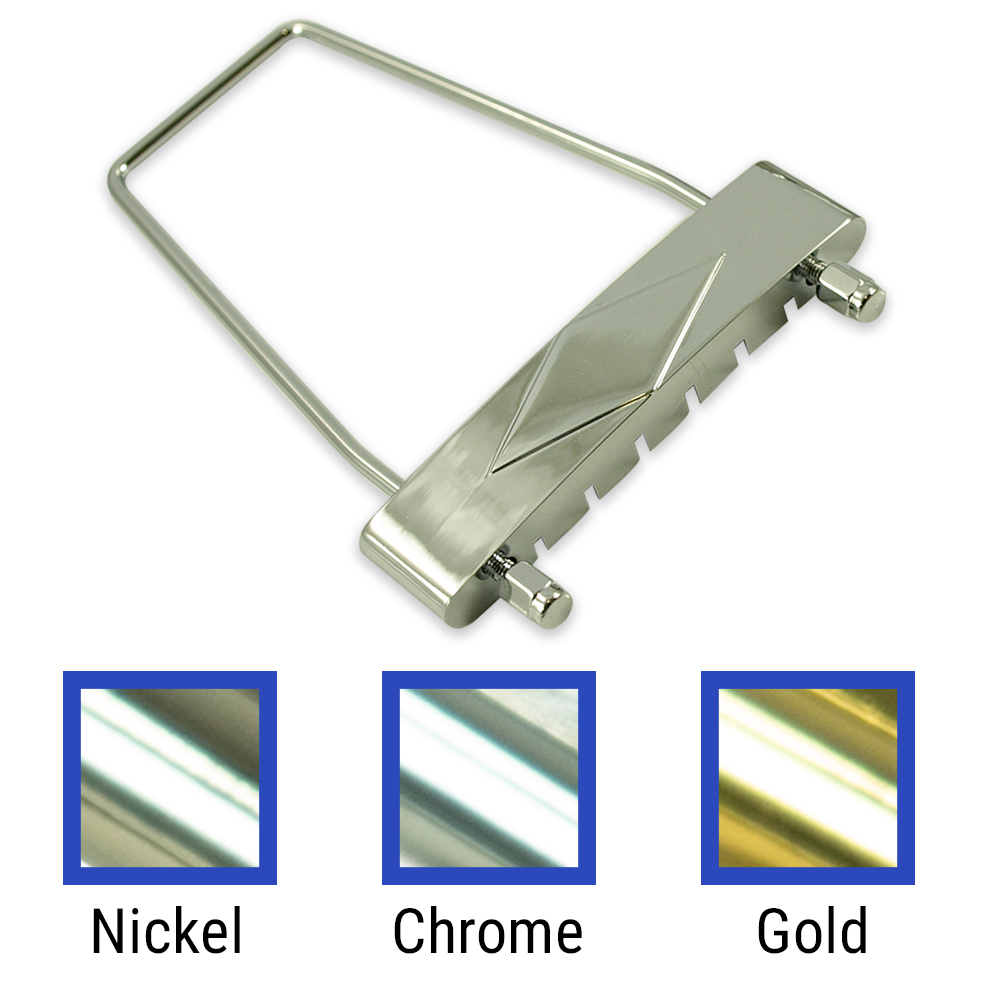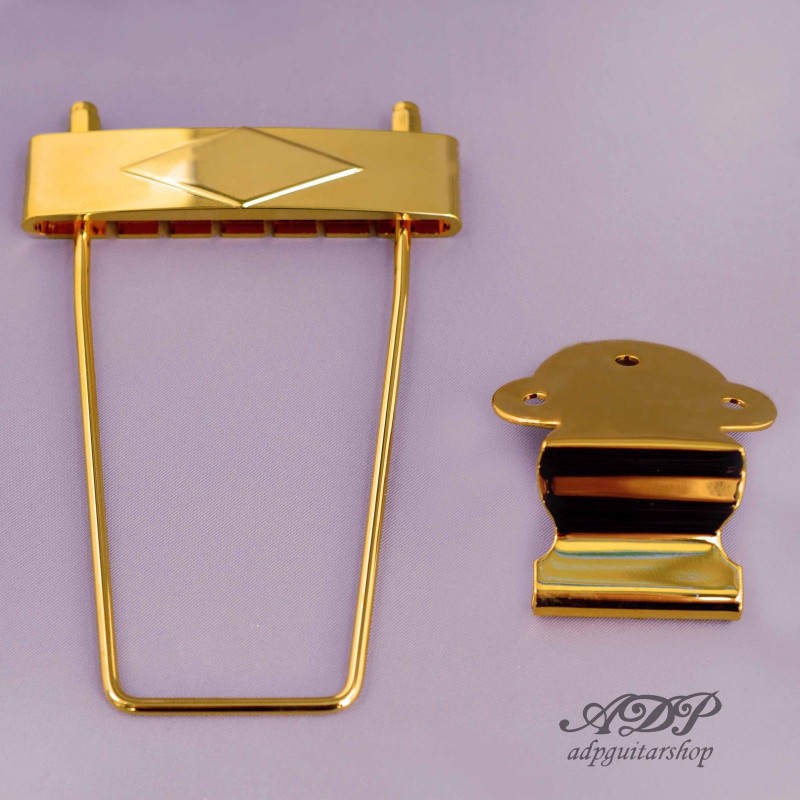

Even though the guitar has been well taken care of, the wood doesn't seem to be that strong, and I know the screw holes don't have much life in them. And I wasn't too happy with filling in the strap button hole with something that might not work in the end. Unfortunately, I had to contort the repro piece to work.

I was about to fill in the strap button hole and use the reproduction piece. But, I figured that if the opportunity is there to get an original part, I better do it. BTW, I've flooded every vintage guitar shop trying to find this piece ! I sent an email to him and he had the exact piece that he was willing to part with - for a "if you really want it" - but fair - price. The poster mentioned Jim Bastian / Island Fun House Vintage Guitar and Parts. I stumbled upon a forum post from 2009 that was about the ES-125 tailpiece replacement. I found the exact cloverleaf after 2 weeks of web searching. D (Double Pickup) models included a 3 position toggle switch to select each pickup individually or both pickups simultaneously.Totally agree, the tailpieces are really hard to find. 022 microfarads was used for the tone circuit.

Volume and tone controls were 500k Audio taper pots. This pickup is, however, not as short as those found on an ES-330TD which has the pickup mounted flush to the end of the fingerboard.Ĭoils were wound to approximately 10,000 wraps although DC resistance of these pickups can vary greatly Since the fingerboard sits flush to the body (as opposed to an ES-175) the ES-125 requires a shorter neck pickup than a typical dogear. The ES-125 also used a tapered dogear cover for their neck position pickups with a thickness of 4/16" on the treble side and 5/16" on the bass side. The model used for the ES-125 has a string spacing on the neck pickup of 1 15⁄ 16" from high E to low E. In 1950 the P90 transitioned to 6 adjustable poles between two Alnico 5 bar magnets. The original had 6 Alnico slug pole pieces. The ES-125 was equipped with one P90 pickup.


 0 kommentar(er)
0 kommentar(er)
